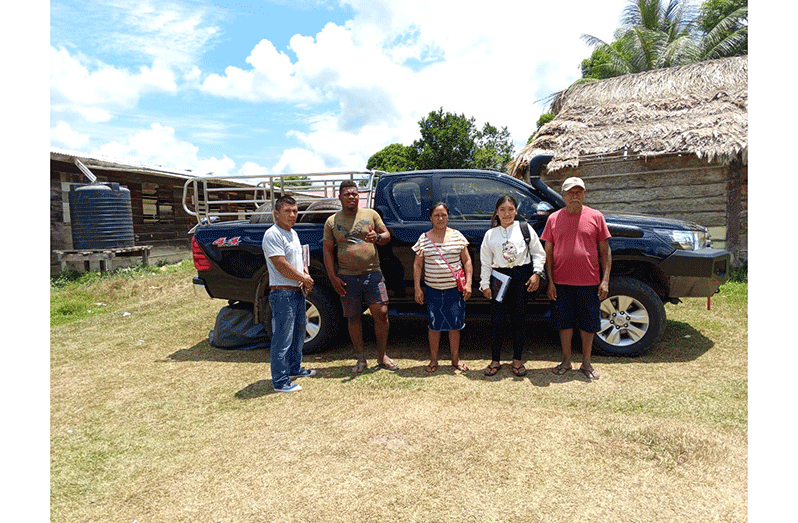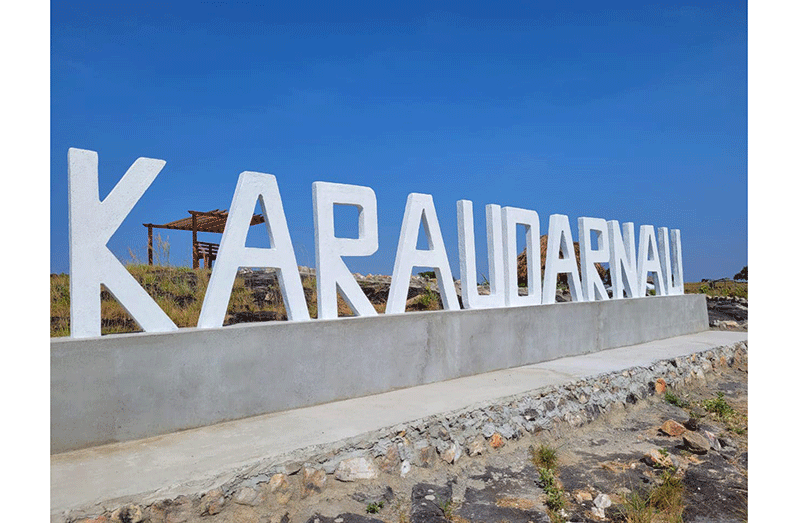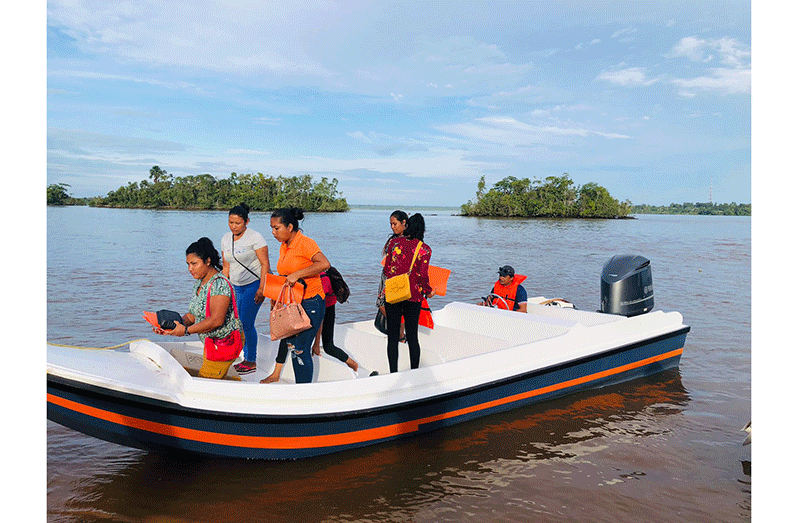UNDER the Low Carbon Development Strategy (LCDS) initiative, the President of Guyana, Dr. Mohamed Irfaan Ali, and his government continue to deliver on their commitment to transform village economies, resources in part through the allocation of 15 percent of the funds received from carbon credits revenues, to Amerindian villages.
This programme started in 2009 through the vision of the then President, current Vice President, Dr. Bharrat Jagdeo who shaped the vision of the LCDS.
Currently, this is allowing the people of the respective communities to decide collectively what is most important for them to invest in so that it can be beneficial for all. All villages have submitted Village Sustainability Plans, and over G$3 billion have been invested in over 500 projects at village level. These projects focus on a broad range of areas including on food security, economic activities and social upliftment initiatives.

To offset impacts of the current El Nino season that is being experienced, Hosororo is using carbon credits revenues for a home water supply project. The Toshao and the residents of the village have decided to use some of the community LCDS funds and purchase 150 black tanks, along with the required pipes and pipe fittings for the additional homes.
While in the village of Karaudarnau, the expansion of the village guest house as well as the finished hot meal kitchen and dining hall at the Karaudarnau Primary School were also completed. Those projects were partially funded by the village’s LCDS fund.
Additionally, some of the LCDS funds were used to enhance Nature Park as well as construct a concrete sign of the village’s name using skills of residents from the same community, thus ensuring that all benefits of this project remain in the village.
With the use of the LCDS funds, several indigenous communities throughout Guyana are constructing and investing in their people’s needs.
In Region eight, some of these communities are, Pennak, the Information and communication technologies (lCT) hub is completed; Arasawa – their gas depot funded by the LCDS fund is completed and serving the residents, while their multi-purpose building is under construction; Waipa’s gas depot is approximately 90 per cent complete. In Region 9, Parabara community bought a ‘village vehicle’ that will be of used by their people; also in Region 8, Katch Cow – the Katch Cow sewing project is under construction; the Kurukabaru- Kurukabaru’s multi-purpose building is almost 90 per cent competed; and in Region 9, Toka Village is utilising part of its LCDS fund to purchase a mini-excavator that will serve the needs of the village – digging of trenches, stomp, and branch removal, to enable agriculture and food security activities, to better serve village needs.
Cognisant that carbon credits revenues present a long term, predictable, financial flow for Amerindian Villages, upon receiving $24 million under the expanded LCDS 2030, Karrau Village, located in Region Seven, is currently planning three development projects that would improve the village economy and provide possibilities for the locals. This project is implemented in phases.

In a recent outreach to the community, Karrau’s Toshao, Shane Cornelius, emphasised that these initiatives include the purchase of a boat and engine for the village, a generator, and the construction of a sawmill owned by the village.
According to him, “all of these that are under implementation right now are leading into the Christmas season.” He related that the funding from the LCDS has been crucial in supporting the implementation of socially and environmentally conscious projects that help Amerindian villages transform local economies, noting that the funding of indigenous communities looks to advance the socioeconomic development in each area.
At Karrau, Toshao Cornelius explained that many projects are being undertaken in the community.
“We are doing a lot of stuff. We are trying to have a lot of projects ongoing. We are trying to develop our village just as the country is developing. We are excited about these times. We know that we have the support of the government. We also want to show the government that we are capable of managing and executing projects as well. We have more to learn, and there are improvements to be made but what matters is that we have ownership of this process and lead in these projects – we design them, we implement them, and we benefit from the impacts” he said.

Regionally, the Toshao underlined that the health centre was being extended while the primary school was being fenced. “It must be noted that the fencing of the school and the rehabilitation of the health workers’ quarters were done by the village council. We, at the village council, got the projects, and we executed them from the regional administration.”
Within the next three to four years, Toshao Cornelius is optimistic that job security will be rapidly advanced for the villagers.
The village council has also prioritised the creation of employment opportunities for people in the community.

“We must have our own job opportunities created within the villages… and to have food security. This is to have more people farming, more produce in the village, and more people eating healthily while supporting locals.”

The community is also eyeing the possibility of having leisure and sports activities there.
“So, a major project that would be completed before this year’s end is to have floodlights around the community grounds. So, we have that as a big project. Toshao Cornelius highlighted.
Many villagers noted that development at national level is seen at village level, and whilst many projects are still in implementation, for the next 10 years and over the implementation of LCDS 2030, this development will be rapidly expanded.
(This is part of a weekly series on the LCDS.) The author can be contacted at cparkinson0206@gmail.com.




.jpg)









